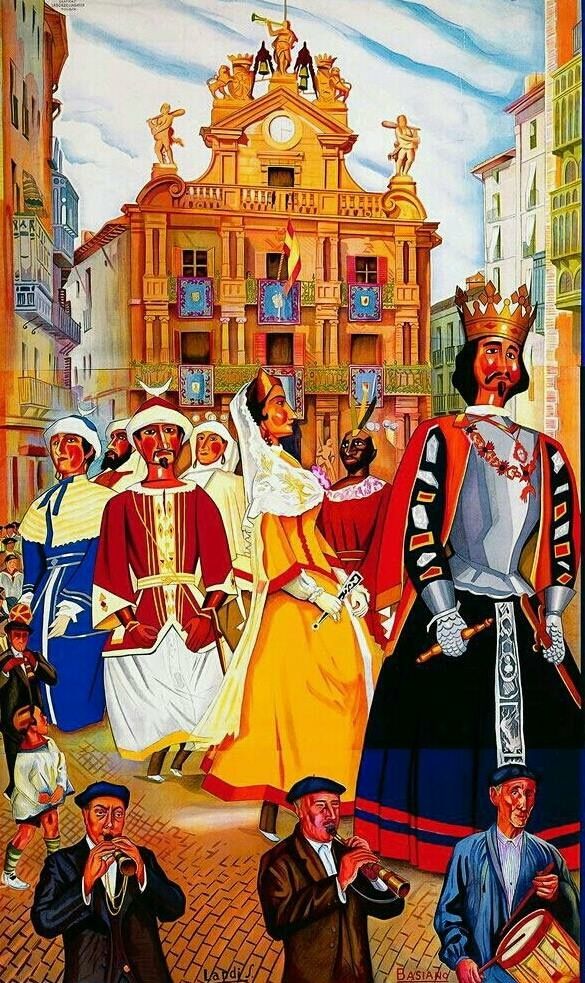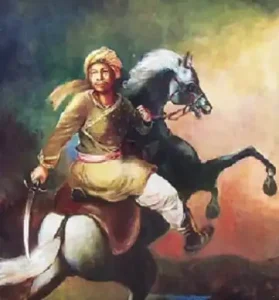Hello, young readers! Today, let’s embark on an exciting journey to Spain and learn about a famous festival—the San Fermín Festival. This event is full of fun, excitement, and traditions. It’s celebrated in Pamplona, a beautiful city in Navarra. So, let’s dive in and discover what makes this festival so special!

What is the San Fermín Festival?
The San Fermín Festival, also known as Sanfermines, is an annual event held in honour of Saint Fermín, the patron saint of Navarra. The festival takes place from July 6th to 14th every year. It’s a time when the city of Pamplona transforms into a hub of joy, music, dancing, and, of course, the famous Running of the Bulls.
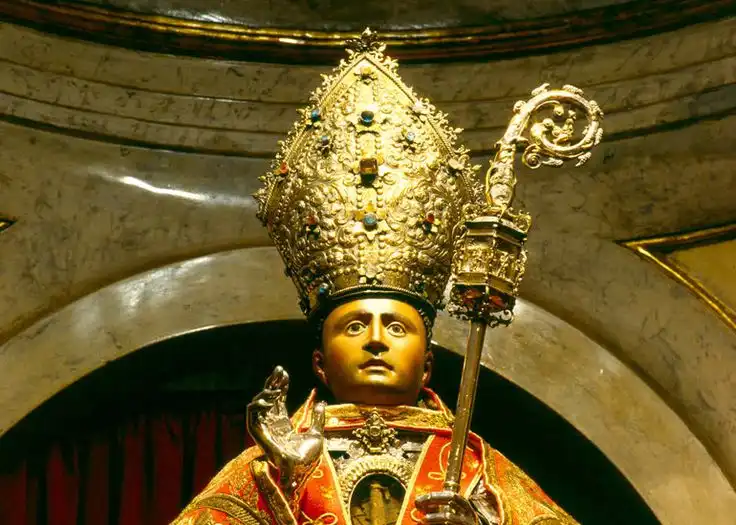
A Bit of History
The festival has deep historical roots dating back to the medieval period. Originally, it was a religious celebration, but over time, it has grown to include various cultural and entertainment activities. The modern San Fermín Festival, as we know it today, began to take shape in the late 16th century. The world-famous Running of the Bulls, or “Encierro,” became a major part of the festival in the 20th century.
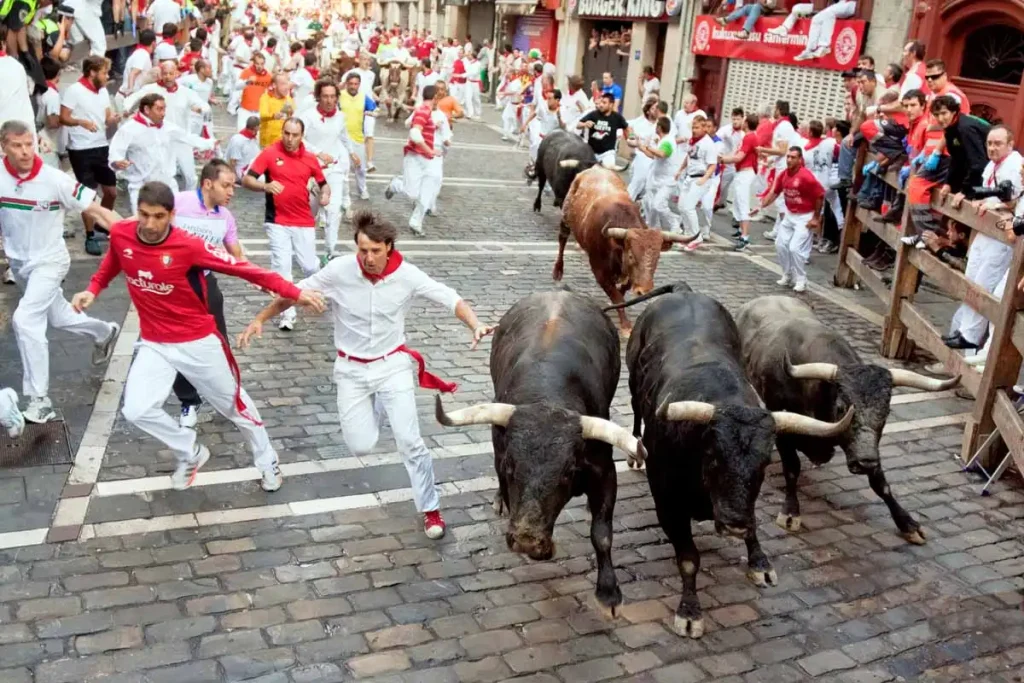
The Opening Ceremony: Chupinazo
The festival kicks off on July 6th at noon with the opening ceremony called “Chupinazo.” Thousands gather in front of the City Hall to witness this event. The mayor or a special guest lights a rocket, signalling the official start of the festival. The crowd cheers loudly, and everyone waves red scarves, an important festival symbol.
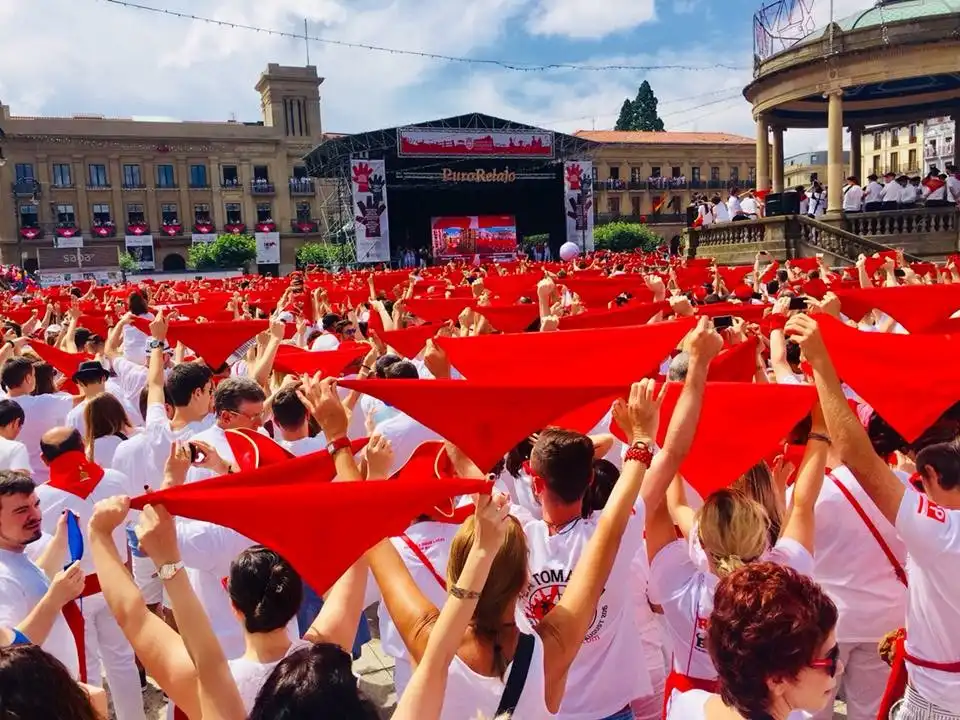
The Running of the Bulls: Encierro
One of the most thrilling events of the San Fermín Festival is the Running of the Bulls. Every morning from July 7th to 14th, people run in front of six bulls and six steers through the streets of Pamplona. The run starts at 8:00 AM and covers a distance of about 800 metres, ending in the bullring.
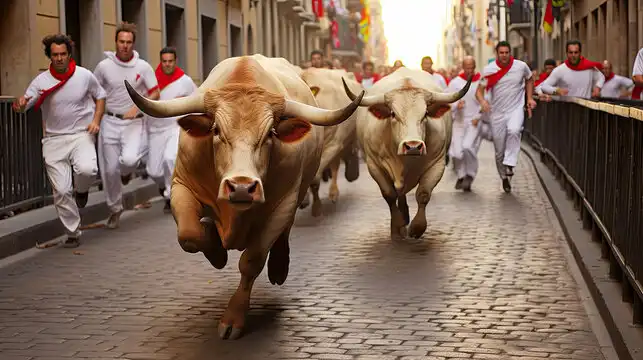
Participants, known as “mozos,” wear white clothes with red scarves and sashes. The run is very dangerous and requires both courage and quick reflexes. While it might sound scary, it’s also a thrilling experience for those who participate and watch.

Music and Dancing
Music and dancing are essential parts of the San Fermín Festival. Throughout the week, the streets of Pamplona are filled with the sounds of traditional Spanish music. There are many concerts and performances by bands and musicians. One of the most famous songs associated with the festival is “Pobre de Mí,” which is sung at the end of the festival to say goodbye to the celebrations.
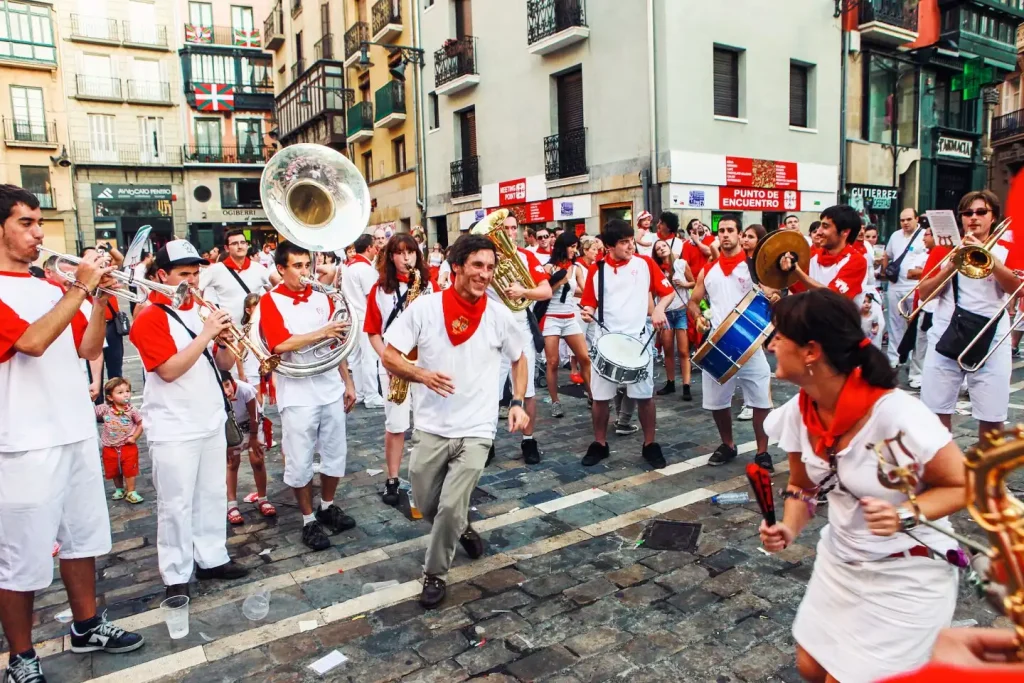
Traditional Costumes
During the festival, people often wear traditional costumes. The most common attire is white clothing with red accessories. The red scarf, or “pañuelo,” is tied around the neck, and the red sash, or “faja,” is worn around the waist. These colours represent the martyrdom of Saint Fermín.

Giants and Big-Heads Parade: Comparsa de Gigantes y Cabezudos
One of the most delightful parts of the festival, especially for children, is the Giants and Big-Heads Parade. Giant figures representing kings, queens, and other characters dance through the streets, accompanied by big-headed figures known as “cabezudos.” These characters playfully chase and entertain the crowds.
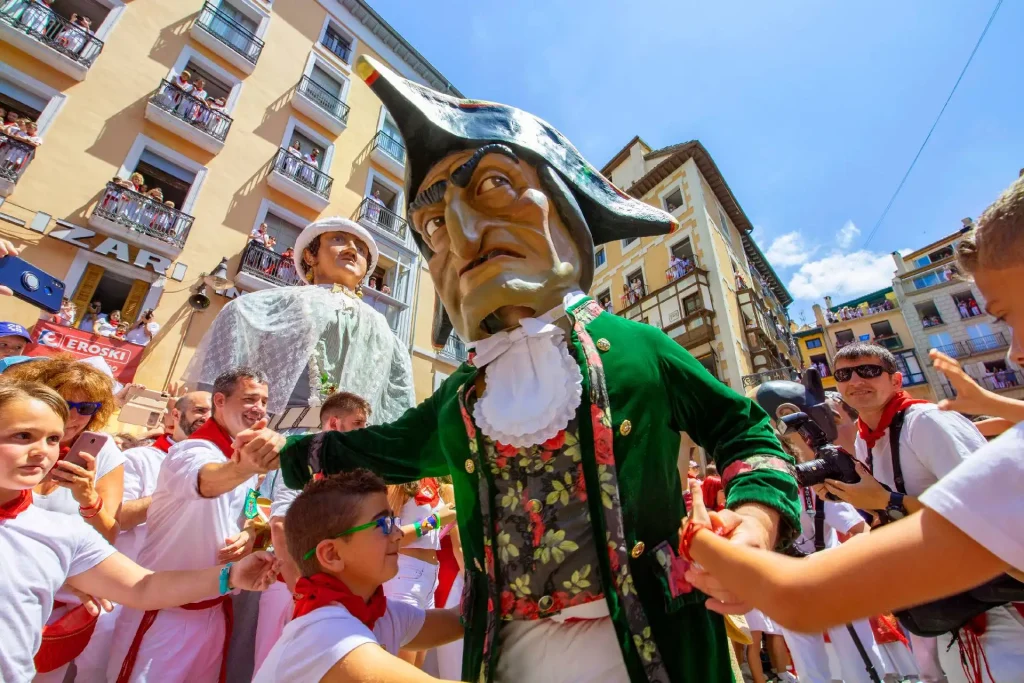
Religious Ceremonies
Despite all the fun and excitement, the festival also has a strong religious aspect. Each day, there are processions and ceremonies in honour of Saint Fermín. One of the main events is the “Riau-Riau,” a traditional procession where participants sing and dance to the chapel of Saint Fermín.
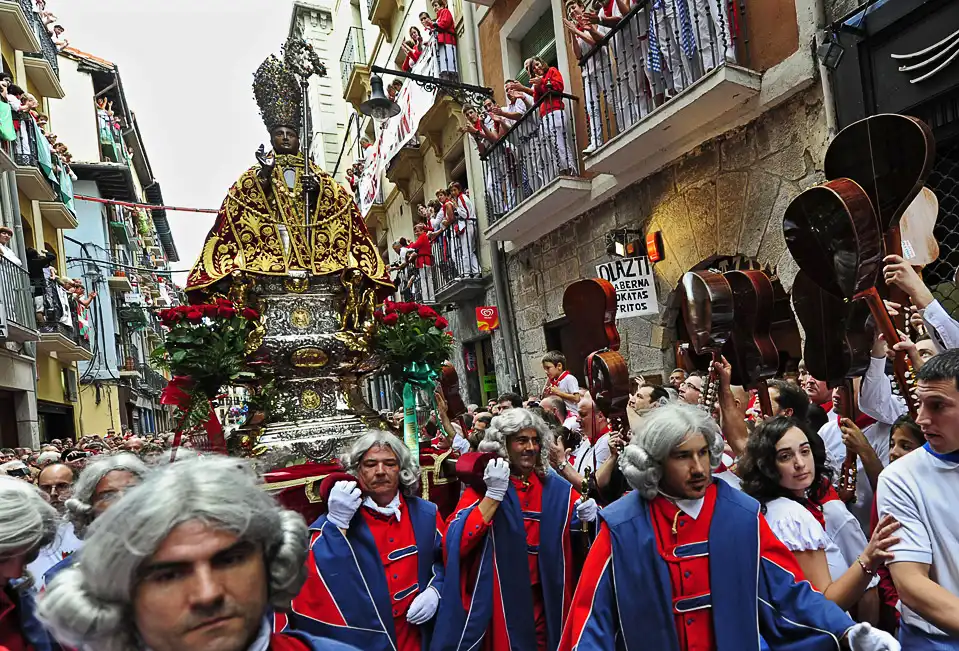
Fireworks
Every night during the festival, spectacular fireworks displays light up the night sky over Pamplona, creating a magical atmosphere. Families and friends gather to watch the colourful explosions, which highlight the festivities.
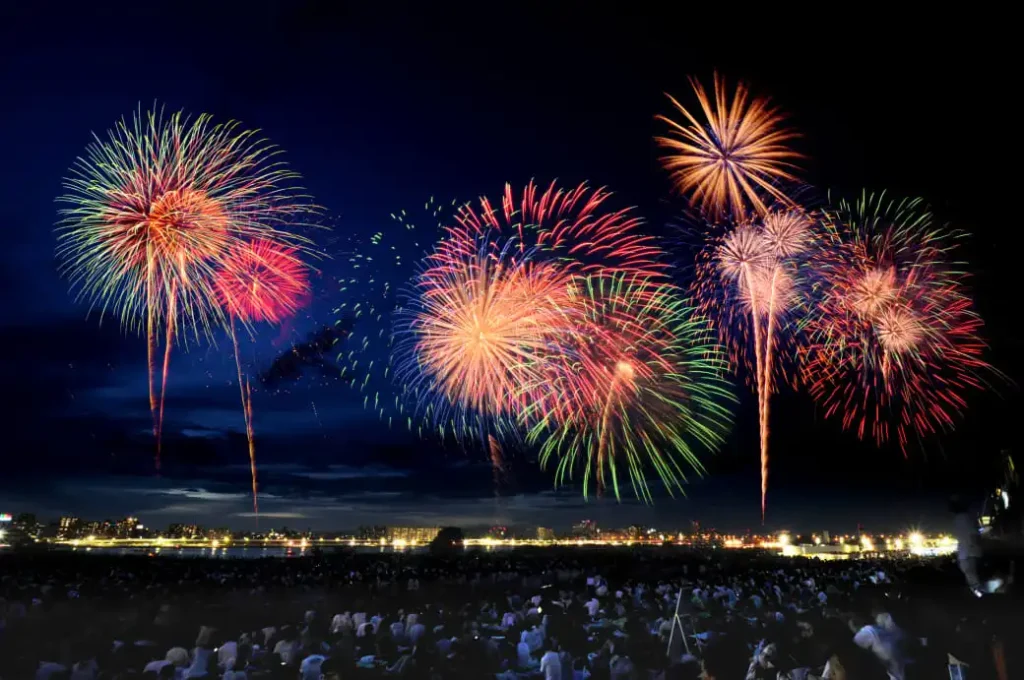
Food and Drink
No festival is complete without delicious food and drink. During San Fermín, you can enjoy a variety of traditional Spanish dishes. Some popular foods include “pinchos,” which are small snacks, and “churros,” a type of fried dough pastry. People also enjoy “sangría,” a refreshing drink of red wine and fruit.
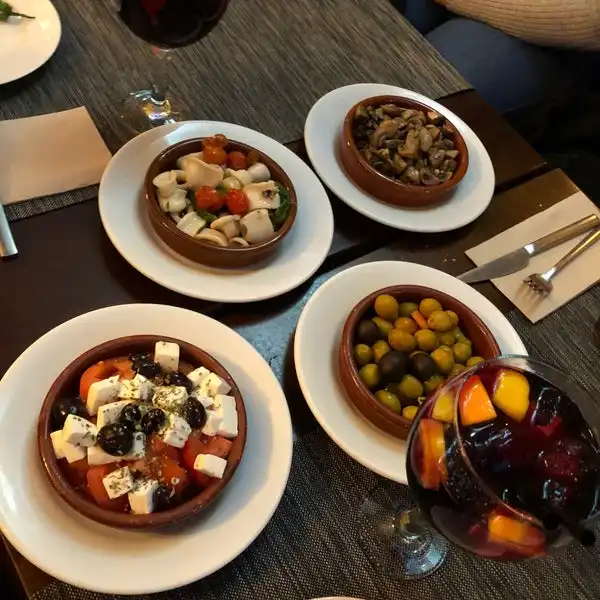
The Closing Ceremony: Pobre de Mí
The festival concludes on the 14th of July with the closing ceremony called “Pobre de Mí.” At midnight, people gather in front of the City Hall, holding candles and singing the song “Pobre de Mí” to mark the end of the festival. It’s a bittersweet moment as everyone says goodbye to another exciting year of celebrations.
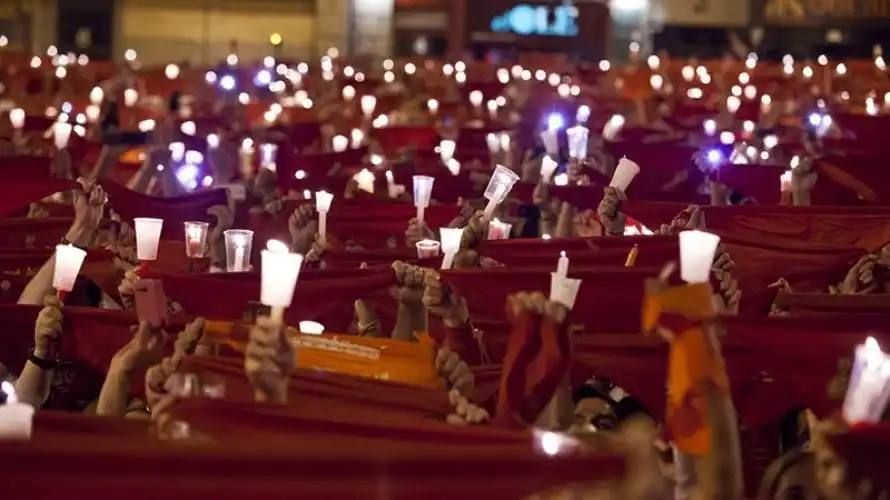
Why is the San Fermín Festival Important?
The San Fermín Festival is important for many reasons. It helps preserve and celebrate Spanish culture and traditions. It also brings people from all over the world together, promoting friendship and understanding. Most importantly, it honours Saint Fermín, reminding everyone of the festival’s historical and religious significance.

Safety and Respect
While the festival is fun and exciting, staying safe and respecting the traditions is also important. The Running of the Bulls can be dangerous, so only well-prepared people should participate. Also, it’s important to respect the local customs and the people of Pamplona who open their city to visitors every year.

Conclusion
The San Fermín Festival is a unique and vibrant celebration that offers a mix of tradition, excitement, and cultural richness. Whether you’re watching the Running of the Bulls, dancing to the music, or enjoying the delicious food, there’s something for everyone. So, if you ever get the chance to visit Pamplona in July, experience the magic of Sanfermines!
For more interesting articles, please visit www.kidzherald.com

